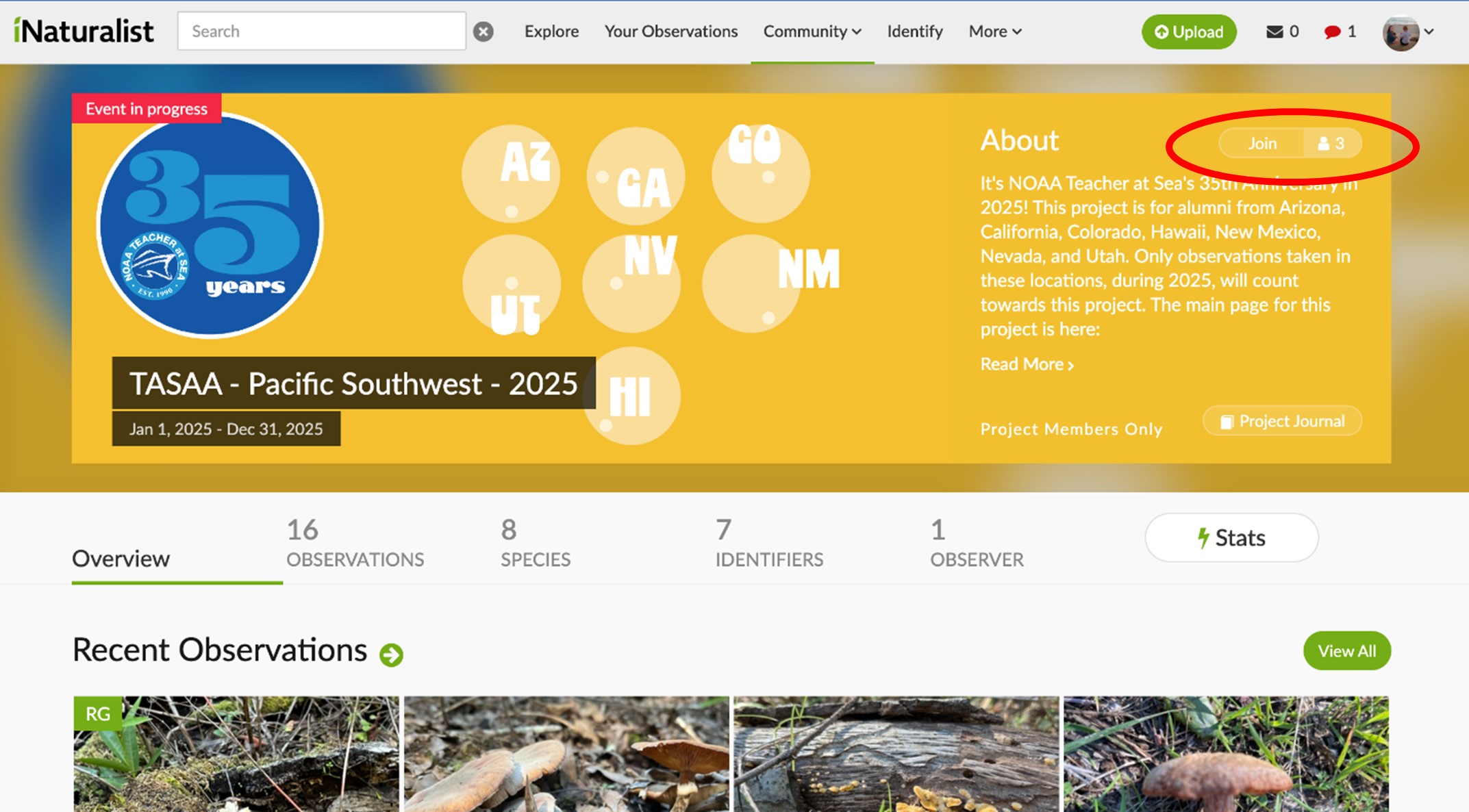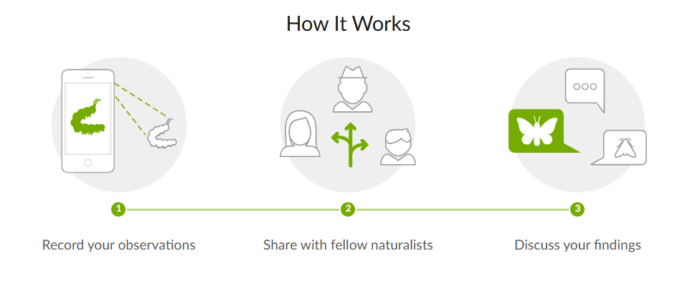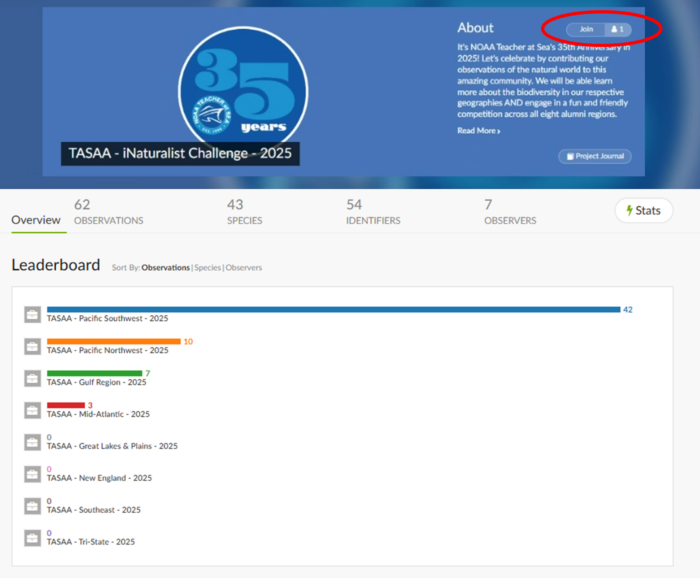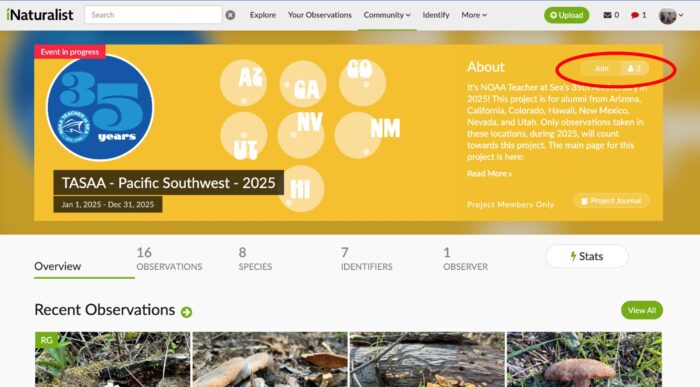
35th Anniversary iNaturalist Challenge

In the early days of the pandemic, we looked for ways to bring our community together virtually. One of those ways was through an iNaturalist challenge. You can see the results of that endeavor here. We were inspired to revisit this effort by alum Dr. Ragupathy Kannan’s Bioblitz in Malaysia. As we celebrate 35 years of science, education, and inspiration, we wanted to find a way that we could once again connect across geographies and share the unique characteristics of our regions, while competing in a fun and friendly challenge that advances science and our understanding of the natural world.

The challenge runs through December 31, 2025, but this time around, it is a little different!
Each region has its own project page, and all of the regions are captured in one “umbrella” page. Your observations taken in any part of your region will contribute to the challenge. The region with the most observations at the end of the year will win the challenge. I took two observations in the Pacific Northwest region and you can see those on the leaderboard pictured below.
How to (screenshots are from the desktop version, the phone app will look slightly different):
1. If you do not already have an iNaturalist account, go here to sign up for one. You will need to be logged into your account to join the challenge. The main login page is here. We recommend going through these steps on your desktop computer, but when it comes to logging observations, using the app on your phone is much easier.
2. Go to the umbrella page, and click “join” at the top right. Then, find your region in the leaderboard and click on it. If you are not sure of your region, skip to step #3.

3. To determine your alumni region, find your state in the list below and click the link. It will take you directly to your region’s page.
(Note for Florida alumni: There are two regions that include Florida – folks living closer to the Gulf usually select the Gulf of America (formerly Gulf of Mexico) region and folks living on the Atlantic side usually choose Southeast region, however, please select the group you have the most affinity to based on prior alumni experiences.)
- Great Lakes and Great Plains Region: Illinois, Indiana, Michigan, Minnesota, Ohio, and Wisconsin, North Dakota, South Dakota, Nebraska, and Iowa
- Gulf Region: Alabama, Arkansas, Florida, Kansas, Missouri, Mississippi, Oklahoma, Tennessee, and Texas
- Mid-Atlantic Region: Mid-Atlantic Delaware , Maryland, West Virginia, Virginia, and Washington, D.C.
- New England Region: Connecticut, Massachusetts, Maine, New Hampshire, Rhode Island, and Vermont
- Pacific Northwest Region: Alaska, Idaho, Montana, Oregon, Washington, and Wyoming
- Pacific Southwest Region: Arizona, California, Colorado, Hawaii, New Mexico, Nevada, and Utah
- Southeast Region: Florida, Georgia, Kentucky, North Carolina, South Carolina, and Puerto Rico
- Tri-State Region: New York, New Jersey, Pennsylvania
4. When you get to your region’s page, click on the “join” button in the top right. You must join the region for your observations to count toward the challenge. If you have already taken observations since January 1, 2025, you will see them populate in your regional page AND contribute to the leaderboard in the umbrella project.

Now you are ready to go into the field and make observations of all the natural things you find! One nice thing about iNaturalist is that it will use the geotagging data from your cellphone’s photos so you can upload your images later, once you return from the field.
You don’t need to add your iNaturalist observations to these projects, they will be pulled in automatically once you’ve joined each project. To find the projects again, you can click on “projects” on your iNaturalist home page as shown below.

For more information on how to use iNaturalist to make observations, identify organisms, and search other observations, you can consult their Getting Started collections here. The Alumni Association will also offer a webinar to explain this challenge in further detail and to share how you can use iNaturalist with your students. Your observations will not only contribute to this challenge, they will help you identify things in the natural world you live in, while generating data for science and conservation.
We look forward to seeing your observations and participating in this fun challenge with you throughout the year.
